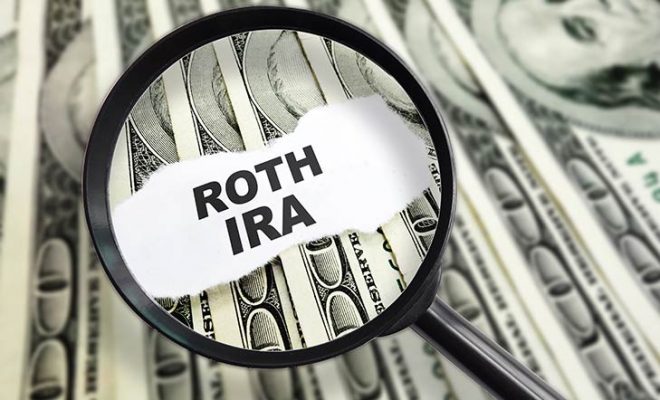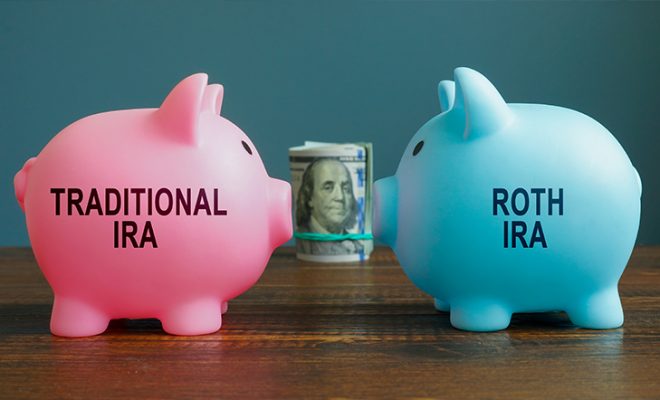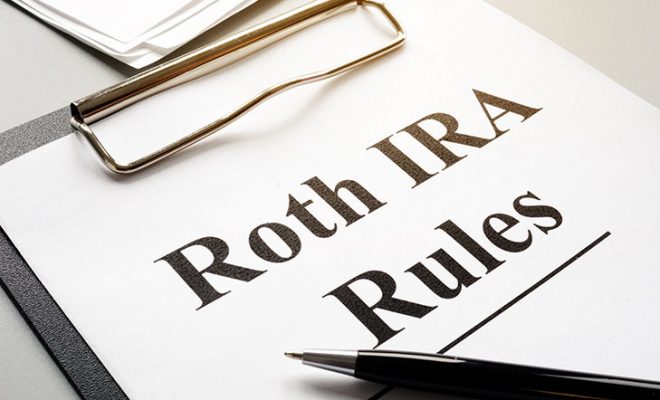Pros and Cons of Investing in Private Equity for Your 401(k)

As you plan your finances for retirement, every choice you make with your 401(k) retirement plan matters. If you’ve maxed out contributions and are considering a traditional 401(k) to Roth IRA conversion, you also have private equity as a potential investment option within 401(k) plans.
Once reserved for institutional investors and high-net-worth individuals, some of the best 401(k) plans are offering access to private equity, opening doors to once-exclusive investments.
But should you take that step? And if so, how does it work within a retirement account?
Let’s talk about the advantages without sugarcoating the risks.
What is private equity in a 401(k)?
Private equity involves investing in companies that aren’t publicly traded. These investments can be in the form of venture capital, buyouts, distressed assets, or private credit. They’ve historically been reserved for large institutions — think endowments or pension funds.
But the landscape is changing.
In 2020, the U.S. Department of Labor clarified that private equity could be included in 401(k) retirement plans under specific conditions. That meant plan administrators could start including private equity through diversified vehicles, such as target-date funds if managed carefully.
You won’t see “Private Equity Fund A” on your 401(k) dashboard. Instead, a portion of a managed fund (say 5 to 15%) might now be allocated to private investments. If you’re enrolled in one of the best 401(k) plans today, there’s a growing chance private equity exposure is already built into your strategy.
But exposure doesn’t mean understanding. And that’s where it’s essential to go deeper.
The upside: What makes private equity attractive to retirement-focused investors
Private equity is no longer a far-off concept reserved for hedge funds and ultra-high-net-worth individuals. It’s becoming part of the mainstream conversation around retirement planning (and for good reason). For investors looking beyond quarterly market fluctuations, private equity can offer long-term growth potential, access to exclusive opportunities, and a new layer of diversification.
But what exactly makes private equity a compelling option for those planning their retirement through a 401(k)?
Let’s take a closer look.
1. Potential for higher risk-adjusted returns
Let’s start with what most investors care about: returns. Historically, private equity has consistently delivered strong performance, particularly when measured over extended time horizons. That’s because private equity firms operate on a fundamentally different rhythm than public markets.
They’re not chasing short-term earnings beats or quarterly analyst expectations. Instead, they focus on long-term structural improvements, such as cutting costs, expanding operations, and repositioning brands. In other words, they buy companies to build them, not to sell them quickly.
This patient, hands-on approach often comes with a reward: what’s known as the illiquidity premium. Because private equity locks up capital for 7 to 10 years or more, investors are compensated for giving up short-term liquidity. That premium has historically translated into higher returns, especially in top-tier funds.
Large institutional investors (think pension funds, endowments, and sovereign wealth vehicles) have leaned heavily into private equity for this reason. Many of them have consistently outperformed public benchmarks over the past two decades, thanks in part to exposure to private markets.
And here’s where it gets relevant to you: if you’re still 15 to 20 years away from retirement, your 401(k) could benefit from that same long-term approach. Time is your ally. And if used wisely, private equity might just become one of the more growth-oriented components in your portfolio.
Of course, this comes with caveats. Past performance is not a guarantee of future results. Returns vary significantly by fund and their respective decisions. But the potential is real, and that’s why it’s on the radar of more retirement-focused investors.
2. Access to previously off-limits opportunities
Until recently, private equity was an exclusive club. The velvet rope was clear: minimum investment thresholds were high (often $1 million or more), structures were complex, and the legal/regulatory overhead was daunting. If you weren’t an accredited investor or a large institution, you simply weren’t invited in.
But the landscape is shifting.
Regulatory changes in the U.S., particularly the 2020 Department of Labor guidance, have opened the door for certain private equity structures to be included within defined contribution plans, such as 401(k)s. That means that, under strict oversight and as part of a diversified fund, private equity is now available to a much wider range of retirement savers.
Major asset managers have responded by developing retirement-friendly vehicles. These fund-of-fund models dilute risk across many private equity managers and portfolio companies. Some even embed private equity into target-date funds (the default option in many workplace 401(k)s).
So, if your employer offers one of the best 401(k) plans available today, there’s a chance you already have indirect access to private equity through a managed portfolio. You may not see a fund labeled “Private Equity,” but a portion of your default investment could already be benefiting from it.
This democratization of private equity is significant. It brings institutional-caliber strategies to people planning for retirement, not just billionaires. And while access alone isn’t a reason to invest, it’s a game-changing shift worth understanding.
3. Real diversification
Ask any financial advisor, and they’ll tell you that diversification is the cornerstone of sound investing. However, the kind of diversification you need today looks different from what worked 20 years ago.
Public markets have become increasingly interconnected. Tech stocks drive the S&P 500. Bonds, once the ballast to equity volatility, don’t always provide the protection they used to (especially in a rising interest rate environment). That leaves many retirement portfolios exposed to concentrated risk, even when they look diversified on the surface.
Enter private equity.
Because it operates in a separate ecosystem, private equity introduces exposure to assets that behave differently. You may be indirectly investing in a regional logistics company, a chain of specialty dental practices, or a mid-market manufacturer expanding its operations overseas. These companies aren’t listed on any exchange. They aren’t priced every second. And they often operate in sectors or geographies that are underrepresented in public markets.
When added thoughtfully, private equity can help smooth out the volatility of a traditional portfolio. It doesn’t move in lockstep with the S&P or Nasdaq. That’s valuable, especially when public markets are swinging wildly or underperforming.
Now, to be clear: private equity isn’t immune to risk. It has its own cycles, challenges, and periods of underperformance. But the types of risks it introduces are different. And from a diversification standpoint, different is good.
For retirement-focused investors, especially those in their peak earning years, this type of diversification can add a layer of resilience to a long-term portfolio. It gives your 401(k) more levers to pull, and more places to grow, beyond the same 500 public companies everyone else is tracking.
The downside: What retirement investors must consider before choosing private equity
Private equity may sound like an exciting upgrade to your 401(k) retirement plan. Higher returns, broader diversification, and access to exclusive opportunities make it an attractive proposition.
But let’s be clear, this isn’t a silver bullet.
Alongside its appeal, private equity brings a different set of challenges. Some are structural. Others are practical. And almost all of them demand more scrutiny than a typical retirement saver might be used to. Unlike public market investments, which are standardized and transparent, private equity investments are governed by a different set of rules.
Before you let FOMO push you into an unfamiliar asset class, it’s worth understanding the full picture. Here’s where the trade-offs lie.
1. High fees: They can quietly eat into your gains
Let’s start with what’s often hidden in the fine print: the cost.
Private equity investments are expensive, and there’s no polite way to say it. Traditional index funds, which form the backbone of most 401(k) retirement plans, charge as little as 0.03% annually. Some of the best 401(k) plans even waive fees on select in-house funds. In contrast, private equity commonly operates on the “2 and 20” model: 2% annual management fees, plus 20% of profits.
In real terms, these fees can result in an all-in annual cost of 5 to 6% for the average investor, especially when you factor in fund-of-funds layers, admin fees, and performance incentives. That’s a significant premium compared to index funds and can meaningfully erode long-term net returns.
Even in retirement-adapted structures, fees tend to be 5 to 10 times higher than standard mutual funds.
Why does that matter?
Because those fees compound. If your private equity allocation yields a 10% return but 3% is allocated to fees, your actual growth is closer to 7%. Over time, that difference becomes massive, especially when measured over the decades-long lifespan of a retirement account.
Some plan providers attempt to bundle or smooth these fees within target-date funds, but the impact is still real. And if the private equity fund underperforms? You’re paying premium pricing for mediocre results.
Bottom line: Fees don’t guarantee skill. And in retirement, every basis point counts.
2. Illiquidity: Your money might be stuck for years
One of the fundamental features of private equity is its lock-up period. These are not investments that can be cashed out quickly, not in months, and often not in years.
Most private equity funds require capital to be committed for 7 to 10 years. In some cases, capital calls occur over time, and full distributions may not be made for more than a decade. Unlike mutual funds, these investments do not provide daily redemption or rebalancing flexibility. For retirement savers, especially those near retirement, this illiquidity can limit withdrawal options and force a heavier reliance on public asset portions.
Some structures used in 401(k) plans offer slightly more flexibility, but the core problem remains: you don’t control the timing of your exits.
That’s a major departure from how most people experience investing. With public market assets, if you want to sell your mutual fund tomorrow, you can. Need to reallocate before retirement? Easy. Want to switch funds or withdraw early due to a hardship? It is possible, though with penalties.
But with private equity, you’re committing to a fund that will invest your money over time, manage it behind closed doors, and return capital on its own schedule. That could be a dealbreaker for investors who value flexibility, or for those closer to retirement who may need liquidity in the next five years.
And during a financial emergency? You may be unable to access these funds at all. In short, illiquidity isn’t just an abstract concept. It’s a real constraint on your financial choices.
3. Lack of transparency: You may not know what you own
If you’re used to checking your 401(k) dashboard and seeing detailed performance data, prepare for a different experience with private equity.
Most private equity funds don’t publish daily NAVs (Net Asset Values). They report quarterly. Sometimes less frequently. And even then, valuations are often based on internal models rather than real-time market data.
That means you could be holding an investment that hasn’t been marked to market in months. You won’t see how the portfolio companies are performing, what they’re worth, or how much debt they’ve taken on. You’re trusting that the fund manager is doing their job well, but you don’t get to peek behind the curtain.
This lack of transparency introduces a different type of risk: valuation ambiguity. It becomes difficult to rebalance your overall 401(k) portfolio when one portion is opaque. And when markets become volatile, you might not know how much your private holdings have dropped until much later.
In public markets, data is abundant and standardized. In private markets, it’s not. And for many retirement-focused investors, that’s a discomforting shift.
4. Complexity: Planning becomes more difficult
Private equity doesn’t just complicate portfolio management. It affects tax planning, conversion timing, and overall retirement readiness.
Let’s say you’re considering a traditional 401(k) to Roth IRA conversion. That move requires a clear sense of your current portfolio value (because you’ll be paying taxes based on that valuation).
If a portion of your 401(k) is invested in illiquid, hard-to-value private equity, you may find yourself estimating taxable income on incomplete data. Worse, you might convert during a year when valuations are inflated, leading to a higher tax bill than necessary.
Private equity also complicates withdrawal sequencing. If you’re retired and need to draw down your portfolio strategically, you’ll want predictable access to funds. But private assets can’t be tapped on demand. That limits your flexibility and forces you to depend more heavily on your liquid holdings, which could throw off your allocation plan.
This isn’t to say private equity ruins tax planning. But it adds a layer of complexity that most retirement-focused investors haven’t had to navigate before. And unless you’re working with a financial advisor who understands these nuances, you might be flying blind.
5. Manager quality: Who manages your investment matters (a lot!)
Here’s a harsh truth about private equity: returns are not evenly distributed.
The top 25% of private equity managers consistently outperform the rest. The bottom 25% consistently underperform, not only relative to their peers but also in comparison to public market benchmarks. That variance makes manager selection arguably more important in private equity than in any other asset class.
But here’s the catch: in a 401(k) retirement plan, you don’t get to pick your fund manager. Your plan provider or fund administrator does. They might partner with a well-known firm, or they might not. And even among elite names, not every fund vintage is a winner.
This introduces selection risk, which is the possibility that you’ll be allocated to a private equity strategy that simply doesn’t deliver. You’ll be locked in for years. You’ll pay higher fees. And in the end, you might walk away with subpar returns that could have been matched (or beaten) by a low-cost ETF.
The difference between success and disappointment isn’t the asset class, but the manager. And unless you have full transparency into that selection process, you’re taking a leap of faith.
Key questions to ask yourself before you add private equity to your retirement plan
1. How long until you need this money?
Time horizon is everything when it comes to private equity.
If you’re in your early 40s and don’t plan to tap your retirement savings for another 20 years, you’ve got a long runway. That makes you a better candidate for illiquid assets because you can afford to wait. You don’t need instant access. You can ride out slow exits and long hold periods.
But if you’re in your early 60s, things change. You might need to start withdrawals in 5 to 7 years. You’ll likely want more control and more cash on hand. In that case, tying up capital in a long-term, illiquid investment could work against you.
The question isn’t just: “Is private equity good?”
It’s: “Is private equity good for me, right now?”
2. Are you comfortable paying higher fees for specialized access?
Private equity fees don’t hide well. They’re structurally higher and always will be.
You’re paying for access. You’re paying for active management. You’re paying for expertise that a basic algorithm or indexed approach simply can’t replicate.
But the math doesn’t lie: higher fees mean a higher hurdle for your investment to outperform.
Ask yourself:
- Do I trust the additional cost will be worth it?
- Am I willing to accept lower net returns if the fund underperforms?
If you’re fee-sensitive (and many retirement savers are, rightfully so), this should give you pause. Over decades, even small differences in fees can erode a surprising chunk of your retirement income.
3. How much transparency do you expect?
Are you the type of investor who checks your portfolio regularly? Do you like to know where your money is going, what each asset is doing, and how it’s performing month to month?
If so, you might find private equity frustrating.
These funds report on their own schedule, using their models, with limited details. You may not see performance benchmarks. You won’t get frequent updates. And you probably won’t know which specific companies your money is invested in.
If that uncertainty bothers you, that’s okay. Not every investor is comfortable handing over money and waiting years for a final verdict.
So ask yourself: Can I live with not knowing the day-to-day details?
Because private equity requires a level of trust and a tolerance for opacity.
4. How does this fit into my broader financial plan?
Private equity should never exist in a vacuum. It needs to align with your overall retirement strategy.
That includes:
- Your current savings rate
- Your existing asset allocation
- Your tax strategy (especially if you’re planning a traditional 401(k) to Roth IRA conversion)
- Your withdrawal plans
- And your household’s financial stability
Adding private equity might make sense if you’re already diversified and wish to add a long-term growth layer. But if you’re still working to build a basic, balanced foundation or if you’re trying to simplify and de-risk as retirement nears, it could be the wrong move at the wrong time.
Take a step back. Look at the big picture. Don’t evaluate private equity in isolation. Ask: “Does this make my plan stronger, or more complicated?”
5. Can I handle the illiquidity (emotionally and financially)?
This is often the most underrated factor. Most discussions about private equity focus on lock-ups in technical terms: “Your capital may be illiquid for 7 to 10 years.”
But what does that mean for you?
- It means if the market crashes and you want to rebalance, you can’t touch that portion.
- It means if your personal finances shift and you need flexibility, that money is frozen.
- It means you’ll see the balance sitting in your account, but you won’t be able to do anything with it.
Are you okay with that?
Not just logically, but emotionally?
Because there’s a big difference between understanding illiquidity on paper and living through it when markets are shaky and you’re trying to stay calm. If you’ve never had part of your portfolio locked up before, now is the time to consider how you’d respond.
Where private equity fits within your 401(k) retirement plan
Private equity should not replace your core investment strategy. For most professionals, the bulk of retirement savings should remain in:
- Low-cost index funds (U.S. and global equities)
- Bonds or bond funds (to manage risk)
- Target-date funds (which already handle risk tapering over time)
Private equity, if used, should be an add-on. Ideally, it should constitute no more than 10 to 15% of your overall retirement portfolio, unless you have significant assets elsewhere.
And crucially, it should only be included through a managed structure. Direct investment in private funds through self-directed 401(k) plans or alternative custodians is not advisable unless you have deep experience and advisor oversight.
Traditional 401(k) to Roth IRA conversion: How private equity affects it
A traditional 401(k) to Roth IRA conversion involves paying taxes now in exchange for tax-free growth later. When done strategically, it’s one of the most powerful tools in retirement planning.
But private equity complicates it.
- Valuation uncertainty can lead to overpaying on taxes.
- Illiquid holdings might be tough to transfer during conversion.
- Performance could be uneven, and paying taxes upfront assumes future gains that may or may not materialize.
That’s why it’s essential to get professional guidance if you have private assets in your 401(k) and are exploring a Roth conversion. Timing matters. So does sequencing.
Not all 401(k) plans are built alike
The best 401(k) plans offer more than just private equity. They offer:
- Low-cost fund access
- Clear education and transparency
- Roth and traditional account options
- Robust employer matches
- Flexibility to rebalance and adjust over time
Private equity should be the cherry on top, not the cake itself.
If your current plan lacks transparency or locks you into high-cost, low-return products, that’s not innovation, but risk disguised as opportunity.
Proceed, but proceed with a plan
Private equity isn’t inherently good or bad. It’s a tool and one with potential. But like any powerful tool, it needs skilled handling.
So what’s the bottom line?
- Start small: Don’t go all-in. A 5% allocation is more than enough to test the waters.
- Stick to managed structures: Use target-date or balanced funds managed by reputable providers. Don’t DIY.
- Watch your fees: Net-of-fee performance is what matters. Ask for clarity before you invest.
- Time it wisely: Align it with your overall retirement horizon and liquidity needs.
- Talk to a financial advisor: Private equity isn’t a “set-it-and-forget-it” play. An advisor can explain how it fits into your broader strategy.
Ready to rethink your 401(k) strategy, or explore whether a traditional 401(k) to Roth IRA conversion makes sense in a private equity context?
Talk to a seasoned financial advisor.
They’ll help you align your investment approach with your long-term goals, risk tolerance, and retirement timeline. You may also use our free advisor match tool to get matched with 2 to 3 financial advisors based on your financial requirements.










